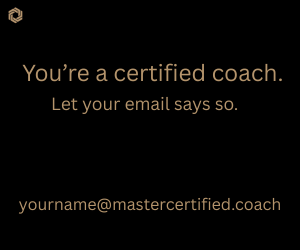Challenges at work (and in life!) are inevitable: tight deadlines, budget demands, relationship challenges …the list goes on. As a leader, you already know that the question isn’t about what to do if you face a challenge but when.
Leadership challenges are a given. It’s how you respond that matters.
Think about a time when you encountered a stressful situation. Maybe:
- Someone made a comment that irritated or offended you
- A situation at work escalated into a full-blown conflict
- You felt that your contributions at a key meeting were ignored
How did you react? You might be able to relate to the well-known “fight, flight or freeze” responses. Perhaps you:
- Reacted immediately without thinking, only to regret it later on
- High-tailed it right out of whatever situation made you uncomfortable
- Froze up and felt like you were unable to respond at all
In addition to your response, you might have noticed some uncomfortable physical symptoms. Do any of these sound familiar?
- A racing heart
- A clenched jaw
- A knot in your stomach
- A withholding of breath
The World’s Most Impactful Leaders Know This
What if there were a more effective way to respond, so that you could thoughtfully take a moment out to manage what you’re experiencing? Turns out, there is.
The world’s most impactful leaders know that you can deepen your capacity to respond more effectively. As you fine-tune your ability to manage your reactions, you’ll also inspire others to follow your lead.
One of the most helpful tools to start with is to think of an iceberg: We humans can be compared to icebergs. Floating along the open waters, at first glance it may seem as though what you see at the waterline is all that’s there—just a towering piece of ice broken off from a glacier.
What you can see visually is just the tip of the iceberg (really).
Below the Waterline
Have you ever stopped to think about what’s happening below the waterline?
In ourselves and in others, we observe behaviors and actions. But, that’s only what we can see on the surface. Ninety percent of what’s really happening—what drives human behavior—is going on below the waterline.
Think about a time when you responded in a less than desirable way, all while thinking about the analogy of the iceberg (what’s happening beneath the surface).
To make an impact as a leader, you need to look within first.
1) Start at the “tip of the iceberg.” You’ve experienced something distressing. How did you behave? What did you say? What actions did you take? Begin to consider the impact of your behavior on yourself as well as on others involved.
2) Dare to descend below the waterline. This step requires a lot of honesty. What thoughts and feelings did you have…but kept to yourself? What outcomes concerned you most? Did a desire to be liked, to seek approval, or to fit in influence your actions?
3) Make a bold move by navigating deep waters. Contemplate how you might infuse your values into the situation. How have your values and beliefs shaped your perceptions related to the experience? Ask yourself what matters most to you and how you might use that to shape a more productive outcome.
So often, we hear cliche statements such as “like attracts like” or “what you fear, you create.” There is truth to both statements.
Shift unproductive behaviors and deepen your capacity to inspire those you lead.
Assume for instance that your focal point of worry centers on being perceived as incompetent. In the heat of the moment when a key project deadline is missed, you unleash a series of snarky comments directed at a team lead. What you feared the most…just happened.
Using the iceberg metaphor can help you shift those unproductive behaviors into ones that are in far greater alignment with your key values and that produce more favorable results. In doing so, you may find that you experience a deeper understanding of yourself—and of those you lead.
Try this quick leadership tip at your next meeting and see what happens.
Here’s a simple tip that you can start using right away: Before your next meeting officially begins, do a quick check-in with everyone present. Ask each person, starting with yourself, to share a bit about what might be happening “beneath the waterline.”
This will encourage more open, honest conversation while deepening everyone’s understanding of how their colleagues may be feeling. The result? Meetings with more productive, positive outcomes. Who wouldn’t want to create that?
Disclaimer
The views and opinions expressed in guest posts featured on this blog are those of the author and do not necessarily reflect the opinions and views of the International Coach Federation (ICF). The publication of a guest post on the ICF Blog does not equate to an ICF endorsement or guarantee of the products or services provided by the author.
Additionally, for the purpose of full disclosure and as a disclaimer of liability, this content was possibly generated using the assistance of an AI program. Its contents, either in whole or in part, have been reviewed and revised by a human. Nevertheless, the reader/user is responsible for verifying the information presented and should not rely upon this article or post as providing any specific professional advice or counsel. Its contents are provided “as is,” and ICF makes no representations or warranties as to its accuracy or completeness and to the fullest extent permitted by applicable law specifically disclaims any and all liability for any damages or injuries resulting from use of or reliance thereupon.
Authors
Post Type
Blog
Audience Type
Coach Educators, Experienced Coaches, External Coaches, ICF Chapter Leaders, Internal Coaches, New Coaches, Professional Coaches, Team and Group Coaches
Topic
Discover - Your Coaching Career, Personal Growth
Related Posts
How Conscientious Inclusion Can Improve Your Coaching
Coaching continues to evolve as the world becomes more interconnected, multicultural, and…
The Coaching Trap: When Empathy Becomes Exhaustion
Prepare yourself for the fact that this will not be about you…
Your Guide to Preparing for the ACC Exam
Much like a smartphone upgrade that introduces improvements for a smoother user…








